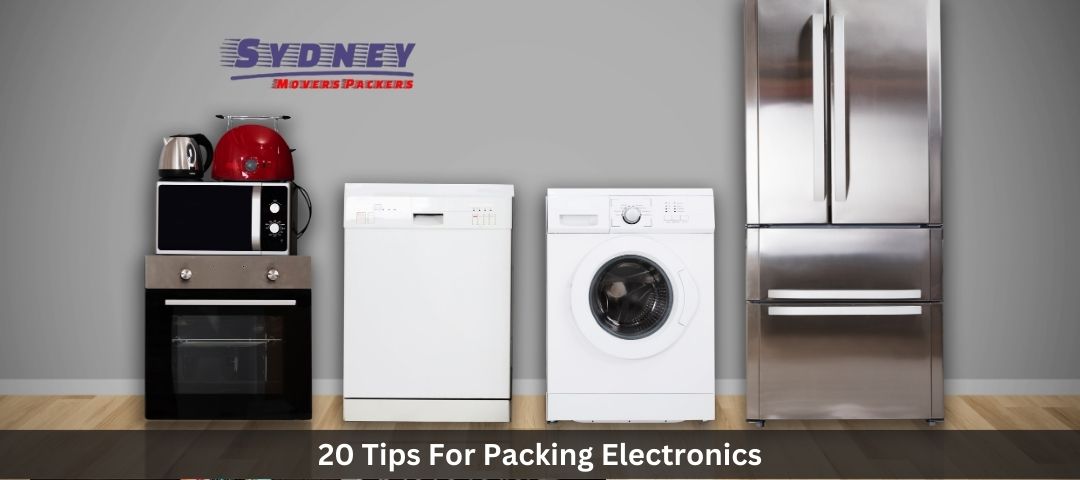Essential Tips For Packing Electronics
1. Start With An Inventory
Before you begin packing your electronics, create a detailed inventory of all your electronic items. Take the time to list down each device, including its make, model, and any unique features it may have. This comprehensive inventory will not only help you stay organized throughout the packing process, but it will also serve as a reference point when unpacking in your new home.
2. Gather Appropriate Packing Supplies
Ensure you have all the necessary packing supplies to protect your electronics during the move. Sturdy cardboard boxes of various sizes are essential for safely storing your devices. Opt for high-quality boxes specifically designed for moving, as they offer better durability and structural integrity. Additionally, stock up on bubble wrap, packing peanuts, packing tape, ziplock bags, and foam padding. These materials will provide the necessary protection to prevent any potential damage during transit.
3. Back Up Important Data
Before packing any electronic device, it is crucial to back up all important data, especially if you are planning to move your electronic items for office relocation. Connect external hard drives or use cloud storage solutions to create copies of files, documents, photos, and videos. This extra precaution will ensure that even if a device is damaged during the move, your valuable data will remain secure.
4. Disconnect And Unplug
Start the packing process by disconnecting and unplugging all electronic devices. Take the time to carefully unplug each device from power sources and disconnect any cables or accessories attached to them. To avoid confusion during the unpacking process, label the cords and cables or take clear pictures of the setups before disassembling them.
5. Use Original Packaging
Whenever possible, use the original packaging for your electronic items. The manufacturers design these boxes specifically to provide optimal protection during shipping. The original packaging often includes custom-fit padding and inserts that keep the devices snug and secure. If you have kept the original boxes, retrieve them and use them for packing your electronics.
6. Wrap With Bubble Wrap
For items without their original packaging, wrap each electronic device with bubble wrap. Begin by covering the device with a layer of bubble wrap, ensuring that all sides and corners are well-covered. Secure the wrap in place with packing tape. This bubble wraps cushioning acts as a shock absorber, protecting the devices from any bumps or jolts during transit.
7. Secure Loose Cables
To avoid a tangled mess and prevent damage to cables, secure any loose cords and cables before packing them. Use twist ties, rubber bands, or cable organizers to bundle cables together neatly. Keeping them organized will make the unpacking process much easier and prevent any potential damage caused by tangled wires.
8. Remove Batteries
Before packing your electronic devices, such as remotes, cameras, or toys, remove the batteries. Batteries have the potential to leak during transit, which can damage the device or other items in the same box. Properly dispose of the batteries or store them separately in a secure container during the move.
9. Use Anti-Static Bags
For sensitive electronic components like computer parts or circuit boards, take extra precautions by placing them in anti-static bags. These bags protect the devices from electrostatic discharge, which can cause damage to delicate components. Anti-static bags are easily available in electronic stores and provide an added layer of protection during the move.
10. Protect Screens
If your electronic devices have screens, it’s crucial to provide them with extra protection. Apply a protective film specifically designed for screens or use screen protectors. These transparent films or shields help prevent scratches or damage during transit, ensuring that your screens arrive in perfect condition.
11. Wrap Fragile Items Individually
While packing your electronics, certain items, such as glass screens or delicate speakers, require individual wrapping for maximum protection. Wrap these items carefully with multiple layers of bubble wrap, paying special attention to fragile areas. Additionally, consider using foam padding or soft cloth to provide extra cushioning and prevent any potential damage during transportation.
12. Fill Empty Spaces
To minimize movement and ensure the stability of your packed electronic items, fill any empty spaces within the boxes. Use packing peanuts, crumpled newspaper, or foam inserts to fill the gaps. This prevents the items from shifting or banging against each other during transit, reducing the risk of damage.
13. Label Boxes
Clearly label each box that contains electronic items with a detailed description of its contents. In addition to labeling the box with the room it belongs to, include specific details about the electronics packed inside. Be as specific as possible to make the unpacking process more efficient. Use labels such as “Fragile” or “Handle with Care” to ensure proper handling by both yourself and the movers.
14. Pack In A Separate Box
To prevent accidental damage, avoid packing heavy or sharp objects with your electronic items. Dedicate a separate box specifically for your electronics. This not only ensures their safety but also makes it easier to identify and unpack them in your new home.
15. Use Cable Management
Invest in cable management solutions to keep cords and cables neatly organized during the move. Consider using cable ties, cable organizers, or even simple zip ties to secure and bundle cables together. This will prevent them from getting tangled or damaged during transit. Neatly organized cables also make it easier to set up your electronics in your new home.
16. Take Photos Of Setups
Before unplugging complex setups such as home theaters or gaming consoles, take clear and detailed photos. These photos serve as visual references and help you remember how everything was connected. When it’s time to set up your electronics in your new home, you can easily refer to the photos for guidance, saving you time and minimizing the chances of making mistakes.
17. Keep Manuals And Accessories Together
To avoid misplacing important manuals and accessories, store them together with the corresponding electronic devices. Use ziplock bags or small boxes to keep these items organized and easily accessible when needed. Having the manuals and accessories readily available makes it convenient for you to set up and use your electronics after the move.
18. Keep Temperature-sensitive Items Safe
If you have temperature-sensitive items like cameras or laptops, take extra precautions to ensure their safety during the move. Pack these devices in a climate-controlled environment to protect them from extreme temperatures. If needed, consider using insulated packaging or adding gel packs to maintain a suitable temperature range for these items.
19. Mark “Open First”
Identify a box that contains essential electronic items you’ll need immediately upon arrival at your new home. Mark it as “Open First” to make it easily distinguishable from the other boxes. This way, you can quickly locate and access the items you need to set up your electronics and make your new space functional.
20. Hire A Professional Moving Company
To ensure a smooth and stress-free relocation of your electronic items, it’s highly recommended to hire professional removalists like Sydney Movers Packers. Their experienced team of movers and packers specializes in safely handling delicate and valuable items, including electronics. By entrusting your move to professionals, you can have peace of mind knowing that your electronic devices will be transported with utmost care and expertise.
Conclusion
Packing your electronics for a move requires careful planning and attention to detail. With the help of these comprehensive top 20 tips for packing electronics, you can ensure the safe transportation of your valuable devices. Remember to back up important data, use appropriate packing materials, and label boxes accurately.
If you want a stress-free moving experience, don’t hesitate to contact Sydney Movers Packers to take the first step toward a successful move. Call on 1800 865 005 or email info@sydneymoverspackers.com.au today to get free quotes for reliable and professional moving services in Sydney, Australia.
Related Posts
Moving with Kids: How to Make the Transition Easier for the Whole Family
While moving can be stressful for everyone involved, kids as well may find it especially difficult. For children, the idea of leaving behind routines, friends, and a safe environment can be stressful. However, you can help your children move and reduce the feeling of...
7 Tips for Hiring a Removalist on a Low Budget
Moving can be a difficult undertaking, particularly if you're on a limited budget. But employing a pro-removalist doesn't have to be expensive. You can get an excellent and affordable moving service by carefully organizing things and using smart strategies. Here are...
Sydney’s Guide to Avoiding the Post-Move Inventory Meltdown
Moving to a new house? The excitement of moving to a new place also comes with the tedious and stressful process of moving. And the whole process doesn’t end at that. The entire process of unpacking the inventory and getting life back on track can take considerable...

The Sydney Movers & Packers Team boasts 5+ years of experience writing informative content about moving and packing. Our team of moving experts understands the hassles of relocating to Sydney. Get helpful tips and advice for your move here. We are the #1 Removalists in Sydney.




